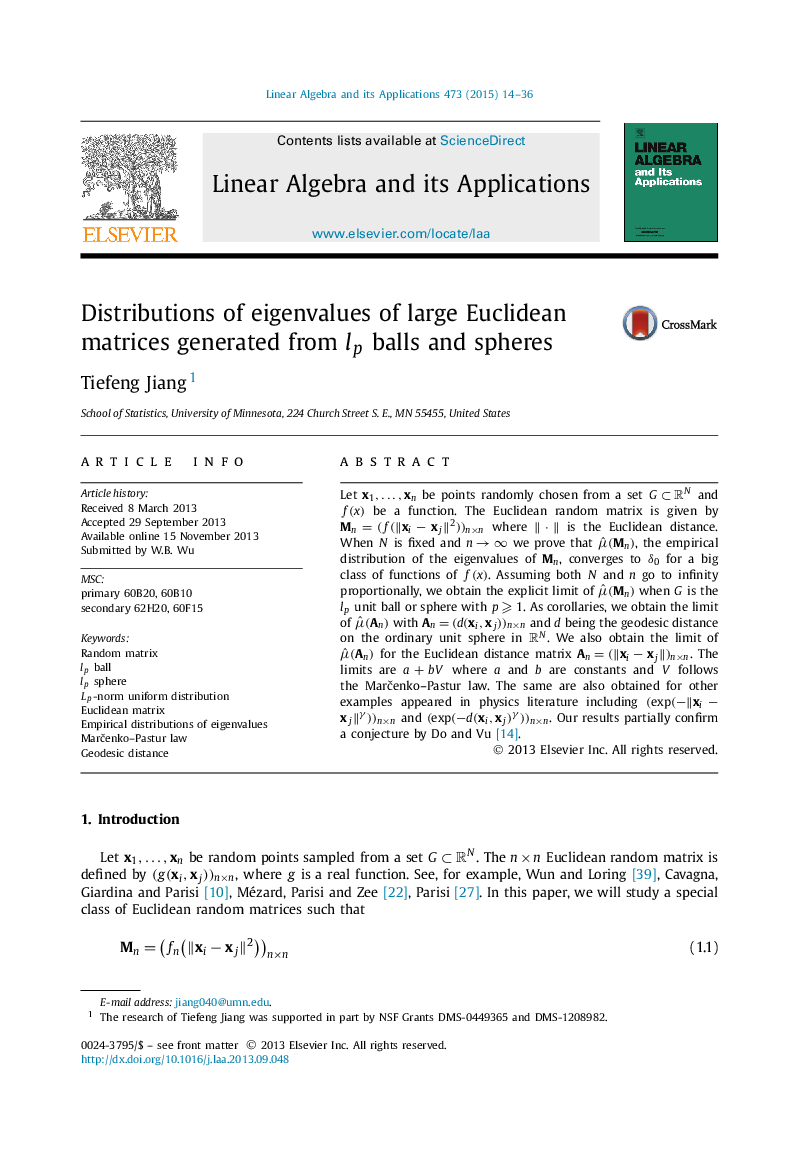| Article ID | Journal | Published Year | Pages | File Type |
|---|---|---|---|---|
| 4599171 | Linear Algebra and its Applications | 2015 | 23 Pages |
Let x1,…,xnx1,…,xn be points randomly chosen from a set G⊂RNG⊂RN and f(x)f(x) be a function. The Euclidean random matrix is given by Mn=(f(‖xi−xj‖2))n×nMn=(f(‖xi−xj‖2))n×n where ‖⋅‖‖⋅‖ is the Euclidean distance. When N is fixed and n→∞n→∞ we prove that μˆ(Mn), the empirical distribution of the eigenvalues of MnMn, converges to δ0δ0 for a big class of functions of f(x)f(x). Assuming both N and n go to infinity proportionally, we obtain the explicit limit of μˆ(Mn) when G is the lplp unit ball or sphere with p⩾1p⩾1. As corollaries, we obtain the limit of μˆ(An) with An=(d(xi,xj))n×nAn=(d(xi,xj))n×n and d being the geodesic distance on the ordinary unit sphere in RNRN. We also obtain the limit of μˆ(An) for the Euclidean distance matrix An=(‖xi−xj‖)n×nAn=(‖xi−xj‖)n×n. The limits are a+bVa+bV where a and b are constants and V follows the Marčenko–Pastur law. The same are also obtained for other examples appeared in physics literature including (exp(−‖xi−xj‖γ))n×n(exp(−‖xi−xj‖γ))n×n and (exp(−d(xi,xj)γ))n×n(exp(−d(xi,xj)γ))n×n. Our results partially confirm a conjecture by Do and Vu [14].
